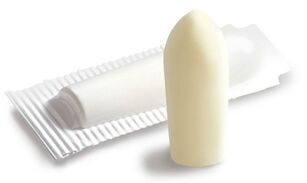
Inflammation of the prostate is one of the most common male diseases that develops both at a young age and in adulthood. Therefore, the patient needs to know which drugs for the treatment of prostatitis have the greatest effect.
This disease, like all others, tends to take many forms and treatment depends on the course of the disease. The basis of therapy is not to relieve inflammation, but to eliminate the cause.
For example, if prostatitis has an infectious etiology, using tests and diagnostic studies, the doctor determines the localization of the infection, its type. After this, antibiotics are usually prescribed. This therapy is called etiotropic.
In addition, symptomatic treatment is also provided, aimed at the inflammatory process itself, its elimination and many other methods, such as physiotherapy. An integrated approach leads to the best result.
And now what are drugs for the treatment of prostatitis in men.
Drugs for the treatment of prostatitis
Depending on the etiology of prostatitis, there are three groups of drugs for its treatment.

First of all, these are broad-spectrum antibiotics (tetracyclines, penicillins), which find the focus of the infection and effectively eliminate it, killing pathogenic microorganisms. These funds are used for infectious prostatitis.
The second group is that of alpha blockers. Designed to improve urine flow by smoothing the smooth muscles of the prostate and to tone the bladder. Often used in combination with antibacterial drugs to enhance their action.
The third are hormonal agents (pro-gestagens, estrogens, androgens). They are used in the treatment of non-infectious prostatitis when the cause of the disease lies in hormonal imbalance.
Medicines for symptomatic therapy
All the symptoms that the body gives as a signal have long been known to doctors. They were also divided into three large groups. Depending on what concerns the patient, the doctor prescribes a certain drug.

This can be frequent and painful urination (urinary tract problems), premature ejaculation and pain in the rectum (reproductive system dysfunction), as well as nervous tension due to focusing on the problem.
Most of this "area" is painful, which helps relieve rectal suppositories. It is worth noting that they have a significant advantage over compressed and encapsulated forms of release of the drug - they are applied as close as possible to the painful area.
If we talk about suppositories, then they also act as drugs for the treatment of prostatitis in men. For example, suppositories with propolis, in addition to relieving pain, relieve inflammation.
Other drugs for prostatitis
Medicines for the treatment of chronic prostatitis are selected by the doctor based on the form of the disease. For example, if the etiology is bacterial, antibiotic-containing agents are indicated.

Basically, all drugs have a positive effect on the prostate gland, normalize its functions, relieve inflammation, pain syndrome, increase potency.
Israeli medicines deserve special attention. Medicine in this country is really effective, and drugs can give amazing results.
It is recommended to undergo a full course of full treatment, which will take 9 weeks, after which you will notice significant improvements.
Important features of the treatment of prostatitis
All of the above drugs are not recommended for use without consulting a urologist:
- First, an unexplained etiology can contribute to the development of more serious diseases of organs and systems.
- Secondly, taking only one drug is not able to give a positive effect to such a pathology.
- Thirdly, such treatment can be expensive, time-consuming, but useless.
It is important to choose the right therapy and implement it in a complex, that is, to use several methods at once. Lifestyle plays an important role in this issue, in particular: nutrition, physical activity and sex life.
The combination of treatment with physiotherapeutic procedures also contributes to the speedy recovery of the patient and the elimination of the symptoms of this vile ailment, which is developing by leaps and bounds.































